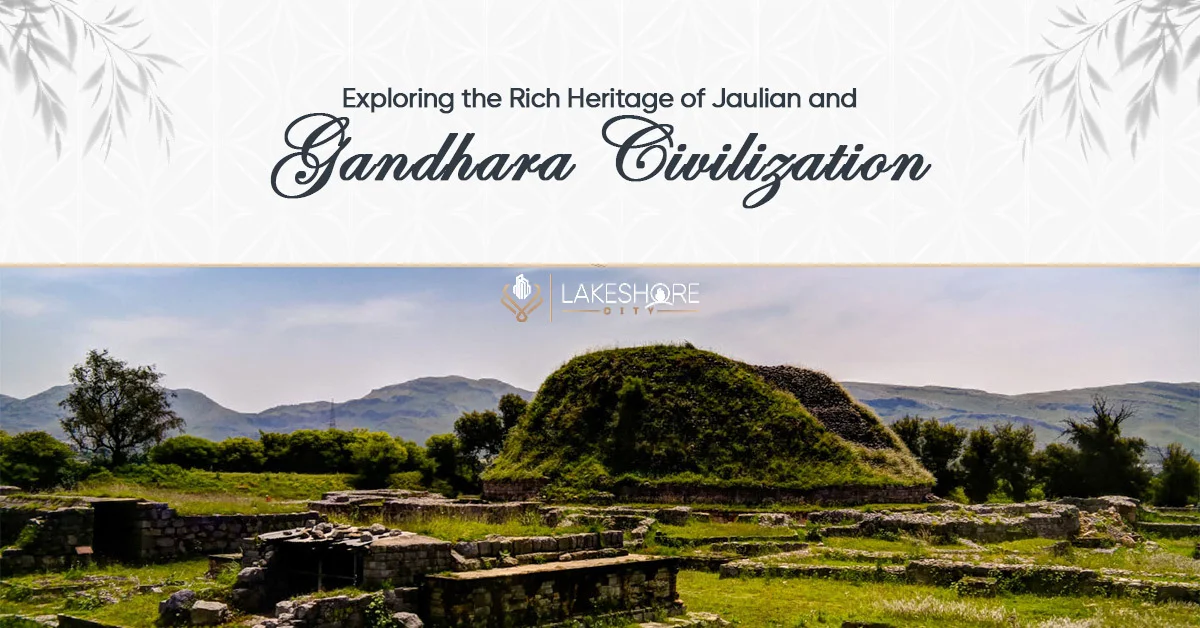Exploring the Rich Heritage of Jaulian and Gandhara Civilization
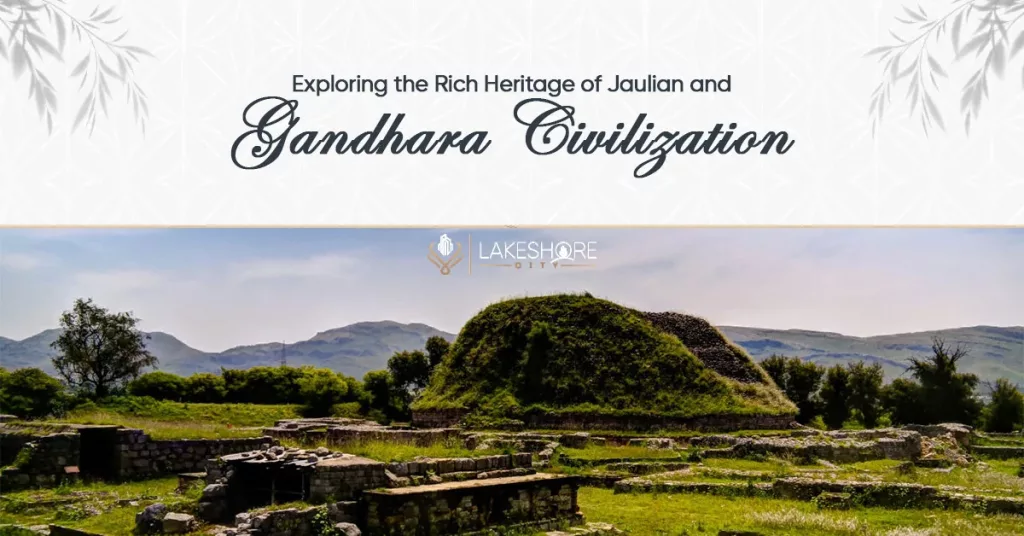
Introduction
As a well-known archaeological site from the Gandhara Civilization, Jaulian, located in the Gandhara region, has enormous historical and cultural significance. From roughly the sixth century BCE to the fifth century CE, the Gandhara Civilization thrived in Pakistan and Afghanistan. This prehistoric culture is recognized for its distinctive fusion of Indian and Hellenistic elements in art, architecture, and religious practices.

Studying the past and cultural relevance of the Jaulians and the Gandhara Civilizations is essential because it sheds light on the region’s rich legacy, opens a window into the past, and helps us comprehend the intricate interactions between different civilizations. Investigating the ruins of this once-vibrant civilization can reveal how it influenced the advancement of philosophy, art, and religion, leaving a permanent imprint on South Asia’s cultural environment. We can celebrate and maintain the rich cultural heritage that continues to influence the region’s identity now by learning more about the history of Jaulian and Gandhara.
Read More: Art and History Unite | Rawalpindi Arts Council’s Gandhara Festival
Historical Background
The rich plains of the Indian subcontinent’s northwest are where the Gandhara Civilization’s roots may be found and can be traced back to prehistoric times. From the 6th century BCE to the 5th century CE, Gandhara flourished and became a significant political and cultural centre.

Origins of the Gandhara Civilization
The movement and contacts of many ethnic groups as well as the fusion of multiple cultures, all had an impact on the development of the Gandhara Civilization. The area’s strategic position as a bridge between the Indian subcontinent and Central Asia was crucial to its growth and prosperity. As it absorbed influences from surrounding areas and fostered a unique blend of Indian and Hellenistic traditions, Gandhara became a melting pot of civilizations.
Read More: Gandhara | Three Day International Symposium | Religious Tourism
Influence of Neighboring Regions
The connections with its neighbouring regions significantly impacted the Gandhara Civilization. Due to its proximity to the ancient Persian Empire, which was to the west, the area benefited from trade routes and cultural interactions. Alexander the Great’s conquests in the fourth century BCE brought Greek influences, which blended with indigenous Indian civilizations to produce the peculiar Greco-Buddhist art characteristic of Gandhara.
In addition, the proximity to the Mauryan and Gupta Empires of India helped Buddhism take root in the area. The art and architecture that graced the numerous monastic complexes and stupas erected during this time show how Buddhism influenced the Gandhara Civilization.
Gandhara was also a stop on the Silk Road, an important commercial route that connected the East and the West and promoted wealth and cross-cultural interactions. The Gandhara Civilization was further enhanced by this commerce network, which made the area a hub for the flow of ideas, art, and religious doctrines.
Read More: Gandhara Development 2023: A Journey Towards Progress and Innovation in Pakistan
Jaulian Civilization: Origins and Development
An ancient archaeological site of significant historical significance is called Jaulian, and it is situated in the Gandhara region of modern-day Pakistan. The Gandhara Civilization, which existed from the sixth century BCE until the fifth century CE, served as the cradle of the Jaulian Civilization. Jaulian became a well-known monastic complex and a hub of Buddhist study.
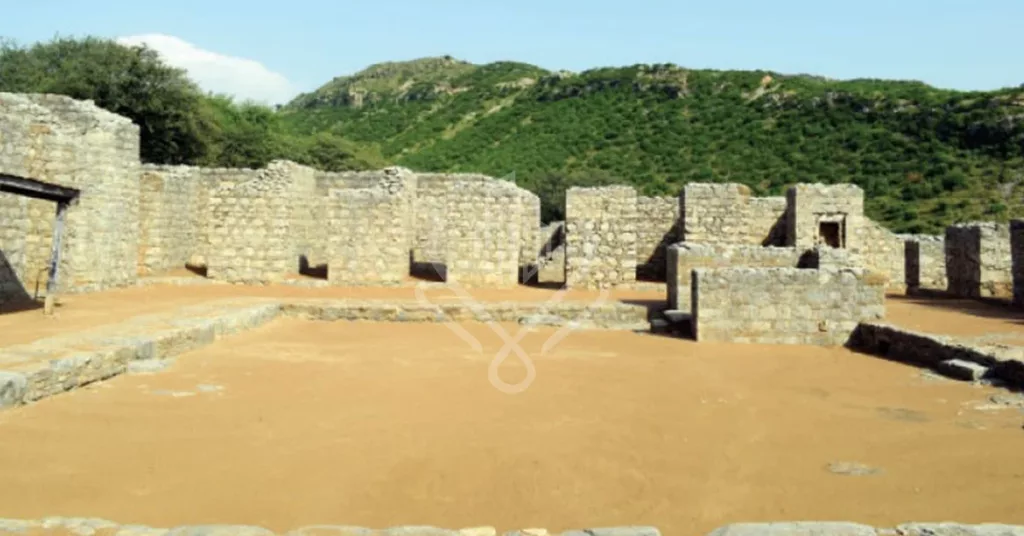
Cultural and Architectural Achievements
The impressive cultural and architectural achievements of the Jaulian Civilization reflected the Gandhara region’s artistic prowess. The stupas, meditation rooms, and elaborate sculptures in the Jaulian monastic complex were well-known. Here, Greco-Buddhist art flourished, producing exquisitely carved stone reliefs and statues due to the confluence of Hellenistic and Indian creative influences.
Jaulian’s architecture served as a display of the sophisticated engineering capabilities of the day. Courtyards and meditation chambers provide appropriate surroundings for Buddhist monks to conduct their spiritual journeys. The structure of the monastic complex was created to foster calmness and contemplation.
Influence of Buddhism on the Jaulian Civilization
Buddhism was a key factor in the development of the Jaulian Civilization. Jaulian became a hub for Buddhist teachings as Buddhism spread throughout the Gandhara region, drawing monks and academics worldwide. The monastery was a center for Buddhist study, meditation, and religious conversation.
Buddha statues, stupas, and other symbols of enlightenment are found throughout Jaulian, indicating the impact of Buddhism on the city’s art and architecture. The reliefs and sculptures showed the reverence and devotion of the followers, showing scenes from the lives of Buddha and other Buddhist deities.
Jaulian’s affiliation with Buddhism made it easier to interchange cultures with other Buddhist centers along the Silk Road, providing a vibrant spiritual and intellectual dialogue environment.
Gandhara Civilization: Rise and Flourishing
One of South Asia’s most important prehistoric civilizations, the Gandhara Civilization, first appeared in the northwest region of Pakistan and Afghanistan. Its beginnings occurred in the sixth century BCE when the Achaemenid Empire ruled the Indian subcontinent. Gandhara’s emergence as a significant cultural and economic center was greatly aided by its advantageous location at the intersection of important trade routes.
Read More: Discover The Ancient Beauty of Gandhara: A Guide to Tourism in Pakistan
Artistic Expressions in Gandhara Civilization
The Gandhara Civilization was cosmopolitan, and its artistic representations displayed a distinctive fusion of Hellenistic and Indian elements. The outstanding Greco-Buddhist art flourished by combining Greek creative skills with traditional Indian traditions. Intricate stone sculptures and reliefs showing Buddhist themes, such as scenes from the lives of Buddha, Bodhisattvas, and numerous celestial creatures, were a distinctive feature of this art form.
A break from earlier Indian art’s more abstract representations of human beings is the realistic and naturalistic style of Gandhara art, which was influenced by Greek sculptural techniques. This blending of creative components produced a style that became identified with Gandhara and permanently impacted the region’s art and culture.
Interactions with Other Ancient Civilizations
The proximity of Gandhara to essential trade routes encouraged communication with numerous prehistoric cultures. Greek influence spread over the area due to Alexander the Great’s conquests in the fourth century BCE, greatly enhancing the cultural environment. Following Alexander’s rule, the Indo-Greek kingdoms imposed a Hellenistic presence on Gandhara, which impacted the region’s culture, language, and government.
Furthermore, the expansion of Buddhism in the area was aided by Gandhara’s connections to the Mauryan and Gupta Empires of India. Many monastic complexes and stupas were built in Gandhara due to Buddhist missionaries, including the legendary Mauryan monarch Ashoka, who spread the religion.
Archaeological Discoveries
The Gandhara Civilization and Julian are rich sources of archaeological marvels that shed light on the region’s ancient past and cultural legacy. The rich history of the civilization has been illuminated by numerous excavations and discoveries, providing a window into the day’s social, religious, and artistic practices.
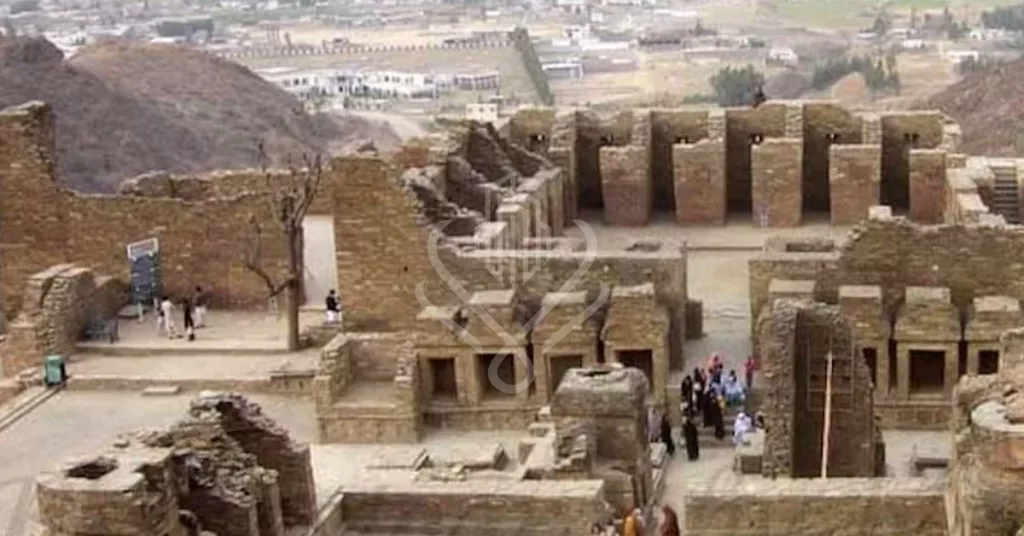
Notable Archaeological Sites in Jaulian and Gandhara Civilization
In Pakistan, close to Taxila, the Jaulian Monastic Complex is a significant archaeological site that preserves the Buddhist legacy of the Gandhara Civilization. Stupas, monasteries, and prayer halls known as chaityas make up the monastery complex at Jaulian, which served as a hub for Buddhist study and meditation.
Taxila
Taxila, a historic Gandharan city, is a UNESCO World Heritage Site and formerly flourished as a hub of study and trade. Numerous Buddhist stupas, monastic structures, and Greco-Buddhist sculptures have been uncovered during Taxila’s excavations, shedding light on the area’s rich cultural diversity.
Butkara Stupa
The Butkara Stupa is a notable archaeological monument in Pakistan’s Swat Valley, featuring the Greco-Buddhist art movement. Its intricate stone carvings and inscriptions represent scenarios from the lives of Buddha and other Buddhist deities, providing a window into the Gandhara Civilization’s religious practices.
The ancient city of Sirkap, a part of Taxila, was once a significant hub of trade and culture. The ruins of grand structures, streets, and residential areas have been uncovered during excavations at Sirkap, offering essential details on the urban life and architecture of the Gandhara Civilization.
Read More: Unveiling The Marvels of Gandhara Civilization
Excavations and Findings
Archaeological digs at these locations have uncovered a wealth of artefacts, sculptures, coins, ceramics, and inscriptions that shed light on the history of the Gandhara Civilization. The Greco-Buddhist art movement is a distinguishing feature of the region’s artistic accomplishments, resulting from blending Indian and Hellenistic artistic traditions.
The discoveries have also illuminated the thriving commercial and cultural contacts along the Silk Road, linking Gandhara to other prehistoric civilizations. These excavations have shed light on the development of Buddhist art and philosophy and the spread of Buddhism and its monastic practices.
The archaeological finds have also produced necessary proof of the Gandhara Civilization’s diverse religious and cultural practices. The artefacts and architectural remnants discovered at these sites have provided evidence of the cohabitation of numerous traditions, including Greek, Persian, Indian, and Buddhist.
The Cultural Exchange: Jaulian and Gandhara Civilization
Due to their close ties, the ancient Jaulian settlement and the greater Gandhara Civilization could share rich cultural ideas that significantly influenced both areas. The influence of religion and philosophy and the exchange of ideas, art, and architecture are just a few ways this cultural exchange is visible.
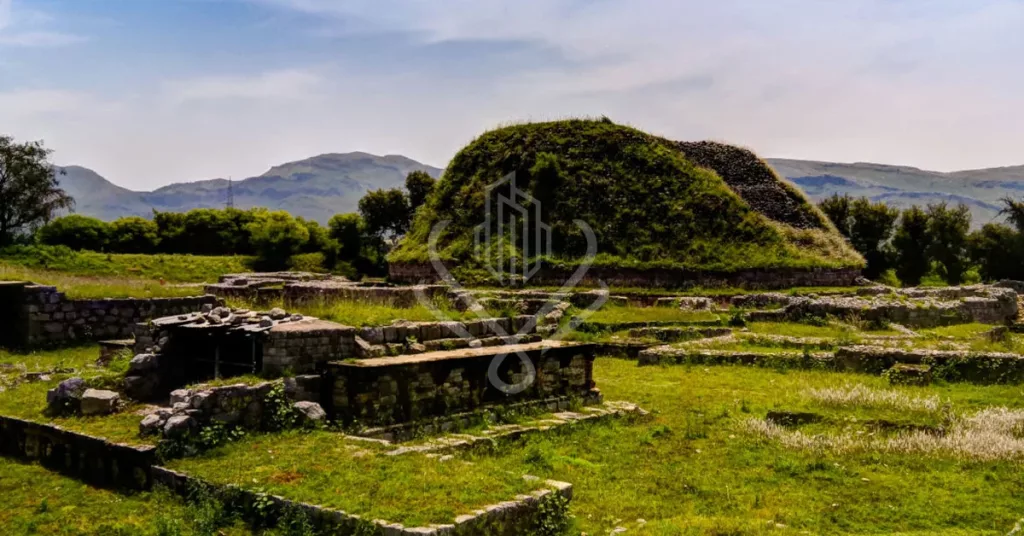
Connections between Jaulian and Gandhara Civilization
The greater Gandhara Civilization included Jaulian, located in the Gandhara region. Trade networks, pilgrimage routes, and intellectual pursuits helped to establish linkages between Jaulian and other Gandharan sites. Jaulian was a monastic complex that served as a center for Buddhist education and drew visitors, academics, and monks from all parts of the Gandhara region.

Exchange of Ideas, Art, and Architecture
Ideas, works of art, and architectural styles were traded during the cultural interchange between the Jaulians and the Gandhara Civilizations. Jaulian and other Gandhara monastic centers served as a conduit for disseminating Buddhist teachings, philosophical ideas, and biblical information. As a result, Buddhist philosophy and regional beliefs and customs were successfully merged.
Jaulian’s artwork exemplified the Greco-Buddhist art form common in the Gandhara region. The sculptures and reliefs of Jaulian and other Gandhara sites feature this realistic human figure-based art form, which was influenced by Hellenistic sculptural techniques. A particular synthesis of Greek and Indian aesthetic traditions was produced due to the exchange of artistic forms.
Architecturally, the layout and design of the monastic structures at Jaulian and other Gandhara sites were similar. The viharas, stupas, and chaityas were built to promote calmness and meditation, providing a favorable setting for Buddhist practitioners to continue their spiritual path.
Read More: Celebrating Cultural Heritage | Gandhara Festival Lights Pakistan
Religious and Philosophical Influences
There were significant philosophical and religious influences between Jaulian and the Gandhara Civilization. As the predominant religion in the area, Buddhism acted as a unifying factor, promoting shared values and practices. Buddhist teachings were spread through Jaulian and other Gandhara monastic centers, drawing tourists and followers worldwide.
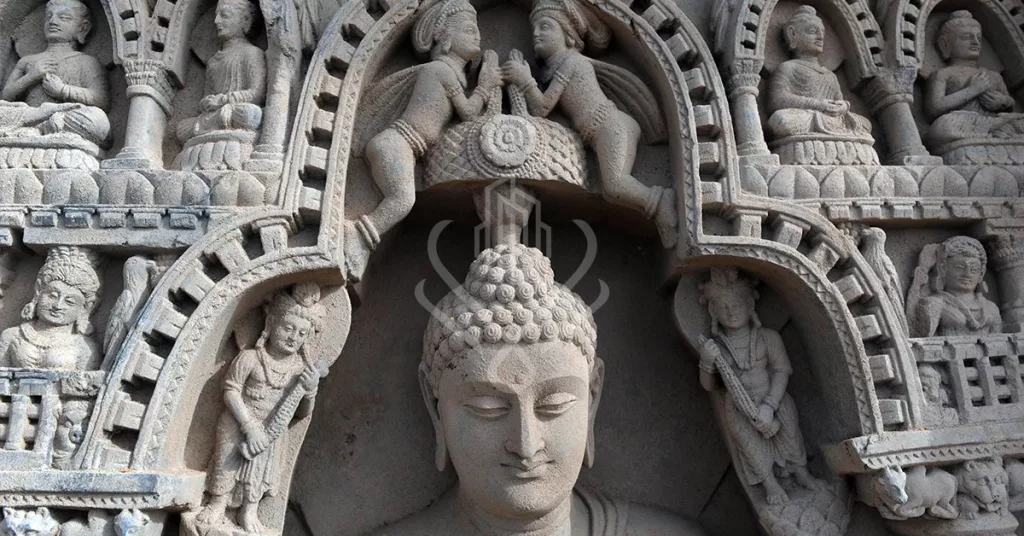
Jaulian’s connections to other Buddhist centers along the Silk Road made sharing intellectual and religious concepts easier. Buddhist missionaries and academics from Gandhara traveled to far-off places, promoting Buddhism and having philosophical debates with other scholars.
Art and Architecture
The Jaulian and Gandhara Civilizations were well-known for their distinctive artistic techniques and styles, a stunning synthesis of Hellenistic and Indian elements. Particularly in the fields of sculpture and architecture, their creative endeavors left a lasting impression on the cultural environment of the area.

Unique Artistic Styles and Techniques
Greco-Buddhist Art
The Greco-Buddhist art style was one of the most recognizable aspects of the aesthetic expression of the Gandhara Civilization. Greek sculpture skills and Indian creative traditions were blended in this exceptional fusion. The end effect was a realistic and naturalistic depiction of human beings, showing the region’s exposure to Hellenistic art.
Iconography
Buddhist themes predominated the rich iconography in the artistic movements of Jaulian and Gandhara. Statues and sculptures frequently depicted Buddha, Bodhisattvas, and other celestial beings. The intricate carvings and iconographic symbols expressed profound spiritual and religious connotations.
Stucco Art
Gandhara extensively used stucco, a substance formed of plaster and limestone. Walls of monastic structures were embellished with intricate stucco reliefs depicting events from the life of the Buddha, Jataka stories, and other Buddhist stories.
Analysis of Famous Sculptures, Statues, and Architectural Structures
Standing Buddha in Jaulian: The Standing Buddha is one of the city’s most recognizable monuments. This life-sized statue of the Buddha depicts him in an elegant and calm pose and is made up of a fusion of Hellenistic and Indian components. The clothing and facial features showcase the tasteful synthesis of artistic trends.
The Fasting Buddha is a stunning sculpture gracing the Butkara Stupa in the Swat Valley. The statue displays the skill of the Gandhara Civilization in rendering human emotions and shows Buddha during his period of fasting and meditation.
Dharmarajika Stupa
The Dharmarajika Stupa in Taxila exemplifies the Gandhara Civilization’s architectural genius. This enormous stupa was a prominent religious and ceremonial center decorated with exquisite carvings and friezes.
Sirkap Ruins
The well-preserved ruins of the ancient Sirkap, a component of the Taxila archaeological complex, provide insights into Gandhara’s urban design and architecture. The city’s layout and design showcase the extraordinary engineering and building methods used by the civilization.
Read More: Dr. Kumar Unveils Pakistan’s Promising Gandhara Tourism Future
Analysis of Famous Sculptures, Statues, and Architectural Structures
Standing Buddha in Jaulian
The Standing Buddha is one of the city’s most recognizable monuments. This life-sized statue of the Buddha depicts him in an elegant and calm pose and is made up of a fusion of Hellenistic and Indian components. The clothing and facial features showcase the tasteful synthesis of artistic trends.
Fasting Buddha at Butkara Stupa
The Fasting Buddha is a stunning sculpture gracing the Butkara Stupa, situated in the Swat Valley. The statue displays the skill of the Gandhara Civilization in rendering human emotions and shows Buddha during his period of fasting and meditation.
Dharmarajika Stupa
The Dharmarajika Stupa in Taxila illustrates the Gandhara Civilization’s architectural genius. This enormous stupa was a prominent religious and ceremonial center decorated with exquisite carvings and friezes.
Sirkap Ruins
The well-preserved ruins of the ancient Sirkap, a component of the Taxila archaeological complex, provide insights into Gandhara’s urban design and architecture. The city’s layout and design showcase the extraordinary engineering and building methods used by the civilization.
Religion and Belief Systems
Many other religions and belief systems existed in the Jaulian and Gandhara Civilizations, with Buddhism predominating. The region’s cultural and religious practices were greatly influenced by Buddhism and other religions, which resulted in the development of temples, monasteries, and distinctive spiritual practices.
Influence of Buddhism and Other Religions
Buddhism
The Gandhara Civilization, especially Jaulian, was significantly shaped by Buddhism. Jaulian developed into a prominent monastic complex and a hub for Buddhist study as Buddhism spread throughout the area. Numerous stupas, viharas (monasteries), and chaityas (prayer halls) were built in Jaulian and other Gandhara sites, and Buddhist doctrine permeated the local culture.
Hinduism
Although Buddhism predominated in the Gandhara Civilization, Hinduism had an impact on it as well. Early artefacts from the area occasionally include Hindu deities, demonstrating the cohabitation of the two major world religions.
Trade and Economy
The prosperous civilization that flourished in Jaulian and the greater Gandhara region was based on trade and economy. The Gandhara Civilization benefited from enormous economic activity and profitable trading networks thanks to its advantageous location at the intersection of important trade routes.
The Silk Road, a vast network of interconnecting pathways, made it easier for people in the East and West to trade products, ideas, and civilizations. Gandhara engaged in international trade by exporting textiles, spices, precious stones, and handicrafts, including the renowned Greco-Buddhist art, thanks to its advantageous location and proximity to the Indus River and Trans-Indus trading routes.
The fertile plains and river valleys supported a thriving agricultural industry, which helped to maintain the region’s economic stability. This economic prosperity kept The local population alive. It drew intellectuals, craftspeople, and traders from other nations, resulting in the development of a thriving civilization that still fascinates historians and fans today. The Gandhara Civilization and Jaulian’s trade and economy interacted to promote cultural interaction, which helped to shape the region’s artistic, theological, and philosophical landscape and leave behind an enduring legacy of affluence and intercultural ties.
Trade and Commerce
Trade and commerce significantly shaped the bright and active societies of the Jaulian and Gandhara civilizations. The area prospered as a humming hub of commercial activity thanks to its advantageous location at a crossroads and connections to wide trade routes. Gandhara became a melting pot of various influences thanks to the old Silk Road, a network of connected trade routes that promoted the movement of products, concepts, and cultures between the East and West.
Rich commodities like textiles, spices, precious stones, and exquisite handicrafts like the famed Greco-Buddhist art could be exported thanks to the thriving trade networks.
Social Structure and Daily Life
Jaulian and the Gandhara Civilization were characterised by a rich tapestry of cultural and religious influences on their social structure and way of life. Kings, nobles, and priests held essential societal positions, divided into several social groups. The monastic order was necessary for intellectual and spiritual life, and Buddhism’s influence was extensive. Like those in Jaulian, Buddhist monasteries served as places of learning and drew students, monks, and followers searching for knowledge and enlightenment.

Farmers tended to productive fields while artisans crafted elaborate sculptures, pottery, and textiles. Agriculture, trade, and handicraft dominated daily life. Communities came together through social events, festivals, and religious rituals, generating a strong feeling of cultural identity and belonging.
Education and Intellectual Development
Jaulian and the Gandhara Civilization greatly emphasised education and intellectual growth, which sparked a thriving culture of learning and knowledge. Famous monastic complexes in the area, like those at Jaulian, served as Buddhist educational institutions and drew academics, monks, and knowledge seekers from all over. Buddhist monasteries offered through education, including religious instruction and various academic disciplines like philosophy, literature, linguistics, and mathematics.

The ideas enriched the Gandhara Civilization’s intellectual environment exchanged over the Silk Road and via interactions with many cultures. Scholars participated in philosophical discussions, translated materials, and created outstanding literary works, which helped the area’s intellectual development and cultural spread.
Read More: President Highlights Pakistan’s Gateway to Gandhara Civilization
Political Organisation
A hierarchical rule system characterised Jaulian’s and the Gandhara Civilization’s political structure. Kings and rulers held the political reins at the highest level, overseeing their separate lands. The area was divided into city-states or kingdoms, each with its governing framework. Noble families that held positions of power and acted as counsellors to the ruling elite frequently made local governance easier.

Buddhist monasteries also had a special place in politics since they were hubs of learning and wisdom and had a lot of power. Despite the absence of a single empire in the area, contacts with nearby cultures, trading partners, and outside authorities shaped political dynamics and alliances.
Decline and Legacy of Jaulian
Several elements contributed to the Jaulian Civilization’s demise, and the general Gandhara Civilization is to blame. One crucial aspect was the fall of Buddhism in the area, which harmed the significance of Buddhist monastic centres like Jaulian. The once-thriving monastic complex saw a steady fall in patronage and support as the acceptance of other religious and intellectual traditions rose.
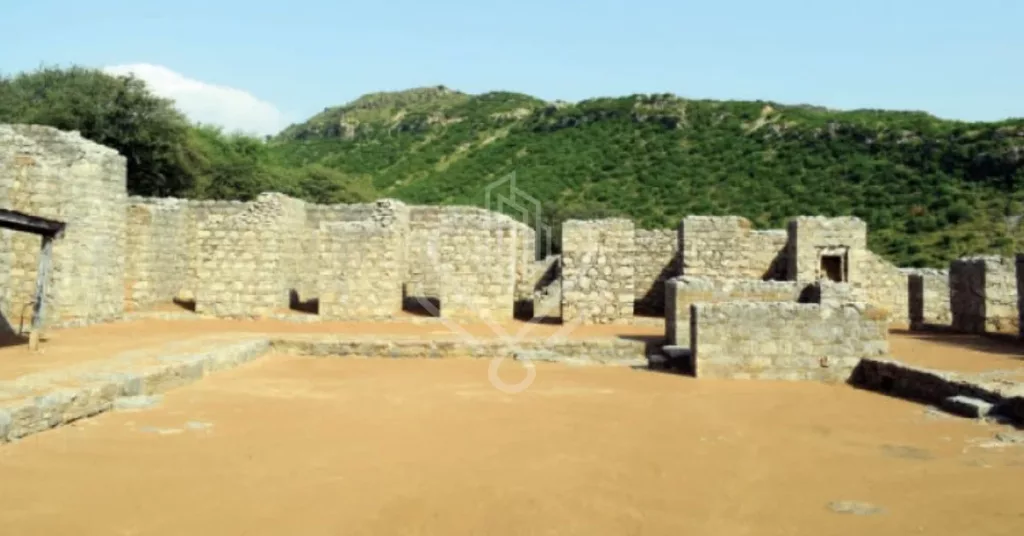
Geopolitical shifts, invasions, and conflicts that affected Gandhara’s trading networks and economic prosperity also affected the civilization’s general stability. The once-vibrant halls and stupa of Jaulian’s site were left in ruins after it was abandoned and faded into obscurity over time.
Excavations and Preservation Efforts in 2023
To preserve the priceless cultural legacy of this ancient civilization, excavations, and preservation efforts in Jaulian and the larger Gandhara region have regained impetus in 2023. To shed light on the history, art, and way of life of the Gandhara Civilization, archaeological teams and specialists are actively labouring to unearth and research the hidden treasures buried beneath the dirt.
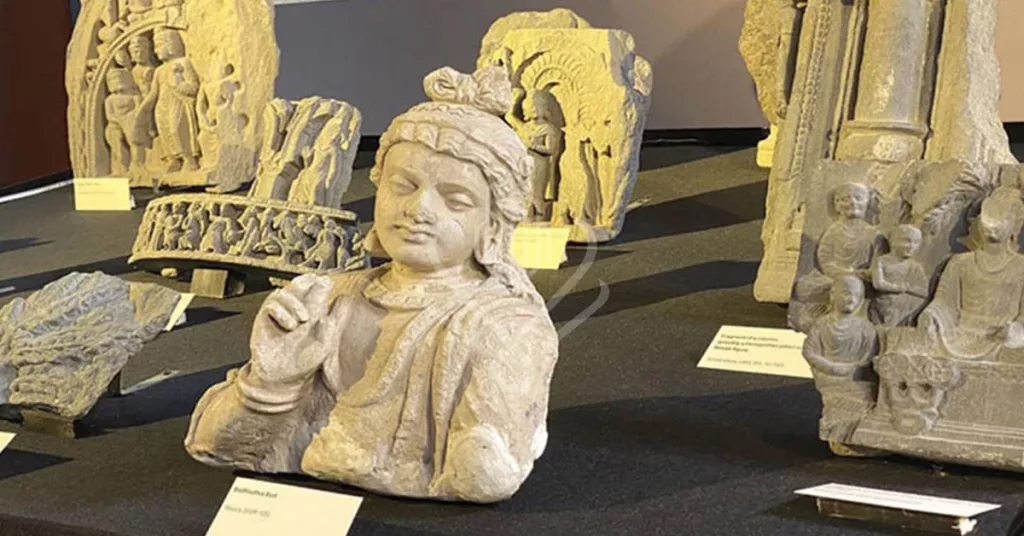
The precious artefacts and buildings found are carefully preserved during these excavations using cutting-edge technology. Another development is an increasing understanding of the necessity to safeguard and conserve the excavated sites for future generations. Governments, organisations, and local communities are working together to implement comprehensive preservation policies, including better site management, artefact conservation, and opening museums and cultural institutions.
Conclusion
Discovering the rich history of the Gandhara and Julian civilizations is a journey of exploration that reveals a magnificent period in South Asia’s history. An insight into this global civilization’s aesthetic, religious, and intellectual accomplishments can be found in the ancient sites of Jaulian and those similar within the Gandhara region.
The legacy of Jaulian and Gandhara continues to enthral academics, historians, and art enthusiasts alike, from the Greco-Buddhist art that demonstrates the singular synthesis of Hellenistic and Indian influences to the enormous commerce networks that united East and West. The cultural legacy of this ancient civilization is being preserved in 2023 by continuing excavations and committed preservation efforts.
FAQs
Q1. What is the significance of Jaulian and Gandhara civilizations in the broader context of ancient civilizations?
Ans. The significance of the Jaulian and Gandhara civilizations lies in their contributions to ancient art, culture, and religious thought. The Greco-Buddhist art of the region, the flourishing trade networks, and the interplay of diverse cultural influences showcase the cosmopolitan nature of this ancient civilization.
Q2. Are there any similarities between Jaulian, Gandhara, and other contemporary civilizations?
Ans. Similarities between the Jaulian and Gandhara Civilization and other contemporary civilizations include exchanging ideas, art, and trade along the Silk Road and adopting diverse religious and philosophical beliefs, enriching the region’s cultural fabric.
Q3. How did the art and architecture of the Jaulian and Gandhara civilizations influence subsequent artistic styles?
Ans. The art and architecture of the Jaulian and Gandhara Civilization, with its Greco-Buddhist style, influenced subsequent artistic expressions in the broader South Asian and Central Asian regions, leaving a lasting impact on following artistic traditions.
Q4. What are some notable artefacts and structures discovered in Jaulian and Gandhara?
Ans. Notable artefacts and structures discovered in Jaulian and Gandhara Civilization include:
- The Standing Buddha statue.
- The Fasting Buddha sculpture.
- Stucco reliefs.
- Impressive monastic complexes that provide insights into their religious and artistic achievements.
Q5. How has modern technology contributed to our understanding of Jaulian and Gandhara civilizations?
Ans. Modern technology, such as advanced archaeological methods, 3D modelling, and remote sensing techniques, has contributed significantly to the understanding and preservation of Jaulian and Gandhara civilizations, enabling detailed documentation and analysis of the archaeological sites.
Q6. What challenges are faced in preserving and protecting the archaeological sites of the Jaulian and Gandhara civilizations?
Ans. Preserving and protecting the Jaulian and Gandhara Civilization archaeological sites face challenges like urbanisation, looting, natural deterioration, and limited funding, necessitating comprehensive conservation efforts and public awareness campaigns.
Q7. Are any ongoing research projects or upcoming Jaulian and Gandhara Civilization exhibitions related?
Ans. Ongoing research projects and upcoming exhibitions related to Jaulian and Gandhara Civilization aim to further our knowledge of the ancient civilization’s history, art, and cultural heritage, providing opportunities for the public to appreciate and learn from this fascinating period of human society.
You can also invest in other famous and most in demand housing societies, such as , Blue World City, Rudn Enclave, 7 Wonders City Peshawar, Taj Residencia, Kingdom Valley, New Metro City Gujar Khan, Forest Town Rawalpindi, University Town Rawalpindi, ICHS Town, Park View City Islamabad, Multi Gardens B17 Islamabad and Nova City Islamabad.
Al Sadat Marketing please contact 0331 1110005 or visit https://alsadatmarketing.com/
Few more real estate housing schemes which are trending now a days in Islamabad by including: Faisal Town Phase 2, Prism Town Gujar Khan, New City Paradise, Eighteen Islamabad, 7 Wonders City Islamabad, Capital Smart City, Silver City Islamabad, The Life Residencia, Faisal Town Islamabad, Islamabad Golf City, Islamabad Model Town and Marble Arch Enclave.
Al Sadat Marketing is an emerging Real Estate Agency headquartered in Islamabad, Pakistan. With over 10+ Years of experience, Al Sadat Marketing is providing its services and dealing all trending housing societies projects in different cities of Pakistan. Islamabad Projects, Rawalpindi Projects, Gujar Khan Projects, Burhan Projects, and Peshawar Projects etc.
Book Your Plot Now:


